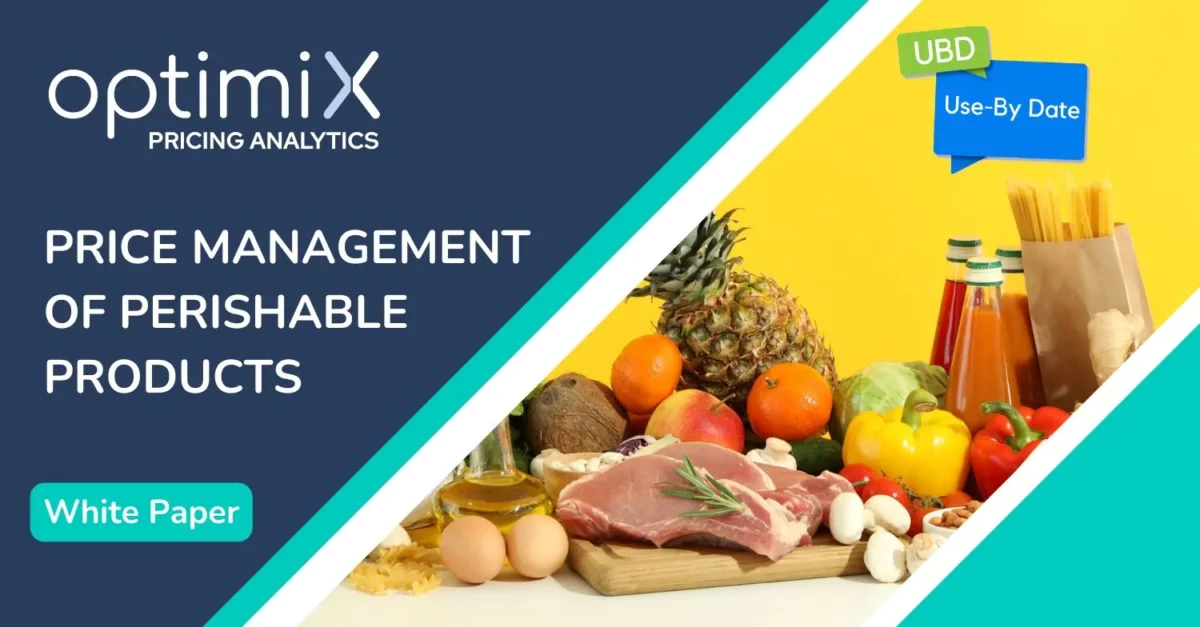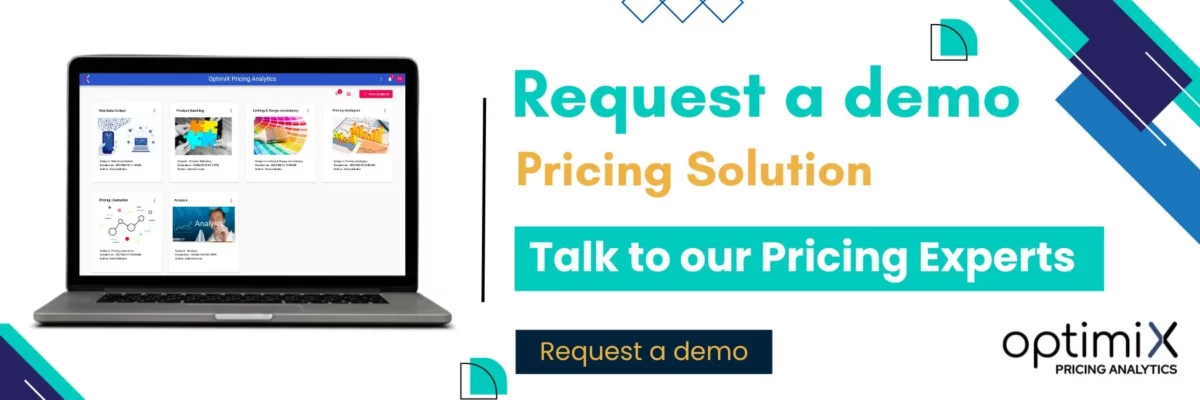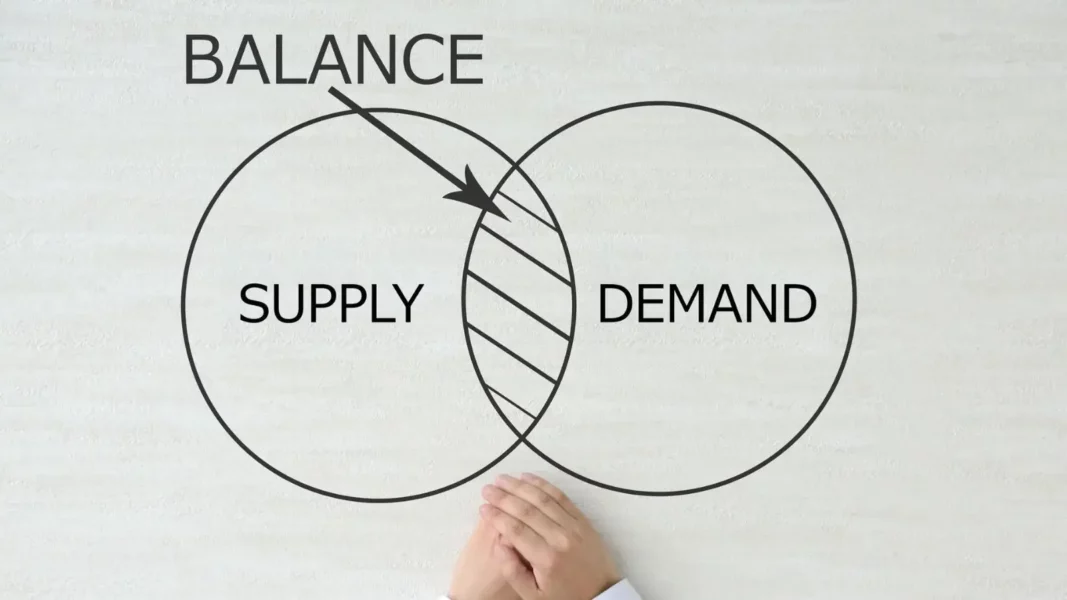For all retailers, pricing has (re)become a competitive lever.
At a time when competition is becoming both stronger and more heterogeneous, selling your products at the right price contributes to customer acquisition and loyalty, as well as to your brand’s reputation.
At the same time, pricing is becoming increasingly complex. To meet consumers’ expectations and competitors’ moves, retailers have to change their prices more often and be more reactive.
In this context pricing automation now seems unavoidable. The development of AI-powered pricing solutions is revolutionizing the way retailers approach their pricing strategy. They are saving teams precious time, boosting profitability and personalizing pricing.
Nevertheless, the adoption of AI in pricing also raises fears:
- Wouldn’t over-reliance on AI lead to a loss of control?
- Is there a risk of a lack of transparency?
- How can you justify certain price adjustments if you don’t fully understand how the machine works?
Faced with these advantages and challenges, how to reconcile automation and human supervision in a pricing strategy?
This article explores the essential steps for maintaining control over AI while leveraging its strengths.
Define a clear strategic framework
Step 1: Clear commercial and financial objectives

We talk about pricing automation. But in reality, it would be more accurate to speak of pricing automation.
Pricing strategy, on the other hand, remains the responsibility of the teams. It derives from the corporate strategy defined by general management, which sets profitability targets and determines the positioning (including price positioning) of the brand. Marketing teams contribute their knowledge of the market, customer segments and brand positioning. The finance department ensures that prices are set to meet profitability targets.
Secondly, on an operational level, category managers are responsible for maximizing the profitability of their category. They are therefore the ones who set prices in line with the pricing strategy and the movements of the competition.
But before automating price calculation, the first step is to define a clear pricing strategy, consistent with your positioning, and to clarify your financial and commercial objectives.For each product category, what is your primary objective?Maximize sales?Boost margins?
For example, if your priority is to increase margins on certain flagship products, the algorithm will need to be programmed to adjust prices in such a way as to optimize profitability while remaining competitive.
Conversely, if the objective is to boost sales on products at the end of the cycle, the automation will have to favor more aggressive price adjustments to clear inventory.
If you automate without clearly defining the main thrust of your pricing strategy, you run the risk of letting the AI make decisions that are disconnected from your priorities.
Step 2: Define your competitive perimeter.
Establish rules and constraints for the algorithm
Once you’ve clarified your strategy, you can automate the price calculation.
But, to keep control, remember to define rules and constraints that the algorithm will have to respect.
Indeed, AI can be very powerful, but without clear limits, it could make decisions that, while optimized in theory, would be aberrant in practice.
Here are 2 safeguards to limit this risk.
Set minimum and maximum price thresholds
When you automate your pricing with artificial intelligence, setting price floors and ceilings for the algorithm is a good way of keeping control.
This is because, if you let the algorithm operate without safeguards, the AI can generate extreme or unrealistic price recommendations in the event of data anomalies or unusual market conditions.
By setting thresholds, you avoid the risk of applying aberrant prices that would damage your brand image or profitability.
Price limits keep your pricing strategy consistent, even when the algorithm dynamically adapts to market conditions. Thresholds help ensure that AI-generated prices remain aligned with your desired positioning.
Finally, in the interests of profitability, the floor price reduces the risk of selling at a loss, while the ceiling price avoids excessive prices that could discourage your customers.
Define an acceptable fluctuation margin
Another good practice is to define an acceptable price fluctuation margin for the algorithm.
The fluctuation margin avoids sudden price variations that could upset customers. It keeps pricing policy consistent, which is important for brand image and customer perception.
Relatively stable prices help maintain customer confidence and avoid the negative perceptions associated with excessive volatility. They also enable customers to make comparisons over time and make informed purchasing decisions.
Internally, limiting the amplitude of variations helps to better anticipate and manage price impacts on sales and margins. An acceptable fluctuation margin also makes it easier to plan inventories, supplies and marketing campaigns.
Finally, this practice allows the algorithm to adapt to market changes in a gradual and controlled way.

Maintaining human supervision
Request human validation of prices proposed by the algorithm
Although AI makes it possible to automate a large part of the pricing process, it’s important to retain human supervision.
For example, you can automate the calculation of prices, with validation by the category manager before transmission to store teams.
In the event of significant price fluctuations, you can also set up an automatic alert for the staff responsible, to draw their attention to the situation.
Alerts keep a human eye on important decisions. In case of doubt, the pricer can intercept a potential error before the price is applied. If the solution allows, he can trace the price calculation back to the input data to detect the source of the anomaly.
You can also plan ahead for use cases that require human intervention to maintain control over business-critical pricing decisions.
Ensure traceability of AI prices
Another key measure of human supervision is the traceability of the algorithm’s recommendations.
To avoid the “black box” aspect of AI, which would present its results without any possible verification, you can bet on an AI solution that will enable you to “trace back” the AI’s decision-making process in order to understand how it arrived at its conclusions.
This is the case with the Optimix pricing solution.
You can visualize the AI’s decision path and the rules it used to make its recommendation.
Thanks to this traceability, you retain control over price recommendations.
You can explain them and, if necessary, refuse to apply them and correct them.
This a posteriori verification and validation process also helps the algorithm to learn and progress.
Train and educate teams to make optimal use of the AI-powered pricing solution
One of the risks of automation is that the staff in charge of pricing will place unlimited trust in the algorithm without really understanding how it works.
To avoid this, you need to train and make your teams aware of the capabilities but also the limitations of the AI solution.
Your employees need to know when verification or manual intervention is required.
Your teams need to understand the basic principles on which the algorithm bases its price recommendations.
Without proper training, employees risk blindly relying on the algorithm’s results and letting errors or biases slip through the cracks. Training should also highlight the use cases where the algorithm has limitations, for example in exceptional situations for which it has not been trained.
– – – – – – – – – – – – – – – – – – –
AI in pricing is a step forward, provided it is used within a well-defined strategic framework.
Once you’ve determined your objectives and your competitive perimeter, you can use an AI solution to calculate your prices.
But your trust in the algorithm must not be blind. Provide mechanisms for validating, alerting and monitoring the algorithm to avoid aberrant applications. With these safeguards, you retain human control over pricing decisions.
Automation must not lead to a loss of skills within the teams. Training helps to maintain and develop human pricing expertise, which remains essential for supervising and fine-tuning the system.
At Optimix, our pricing solutions are designed to make your teams’ jobs easier, not to replace them. The future of pricing is not all-powerful AI, but artificial intelligence serving the expertise of pricers.








